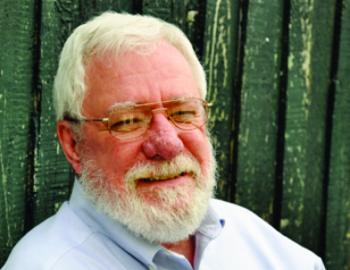
One wreck, many names
Constance Bayou runs generally northward from Big Constance Lake in coastal Cameron Parish, just west of the Vermilion Parish line. Little Constance Lake is a bit to its west and Constance Beach is still more to the west, midway between Johnsons Bayou and Holly Beach.
Nearby you will also find Big Constance Bayou, Little Constance Bayou, East Little Constance Bayou, East Constance Bayou, and East Constance Lake.
All of their names come from El Nuevo Constante, a Spanish ship that sank off the Cameron coast during a hurricane in 1766, according to Charles E. Pearson and Paul E. Hoffman’s book “The Last Voyage of El Nuevo Constante (Baton Rouge: LSU Press, 1995).
Spanish officials in Louisiana made a big to-do about salvaging stuff from the wreck, setting up a camp on a waterway they named Bayou del Constante. But then the ship slipped into the mist of history, English-speaking settlers changed Constante to Constance, and, eventually, nobody remembered how the bayous and lakes were named.
More than 200 years later, in November 1979, shrimper Curtis Blume ran his 80-foot boat, Lady Barbara, a little closer to shore than he usually did, and his net caught on something heavy about a mile offshore of the Rockefeller Wildlife Refuge.
When he got everything untangled, he pulled up three heavy copper discs, each about 20 inches across. He didn’t know what he’d found, but he noted the location so he wouldn’t snag his nets there again.
When a friend looked at the ingots and told him they were similar to some found in rich Spanish shipwrecks off the Florida coast, he put on diving gear to look a little closer at the wreck. He found some more ingots – not copper. These were gold and silver.
That got Curtis pretty excited; he thought he’d found one of the Spanish treasure ships that hauled gold mined in Mexico to the Spanish port of Cadiz. The find also excited historians, anthropologists and other scientific types, because it was the first historic shipwreck to be found off the Louisiana coast.
Curtis and the salvage experts that backed him were mainly interested in gold. The scientific types were interested in the ship itself and why it sank about a mile south of Big Constance Lake.
They found an “Old Wreck,” identified on a chart compiled by cartographer George Gauld from data gathered in 1779, and an 1806 French map showing a Bayou Constance and also recording a “carcasse” near the bayou’s mouth. But neither of the old maps connect the shipwreck with the bayou’s name.
But the experts, after poring through old Spanish records, were finally able to piece together the ship’s story.
El Nuevo Constante was part of a convoy sailing from Veracruz, Mexico, to Cadiz when it was caught in the storm and driven ashore during the first week of September 1766.
After weathering three days of hurricane winds and waves, the ship’s crew began to notice water seeping into the ship, and getting worse by the hour. The pounding seas from the storm had loosened the caulking in the hull, and now it was washing away altogether. There was nothing to do but run for land. The crew turned the ship north; the chaplain prayed they would reach land before sinking.
The chaplain, Father Joseph Buenaventura Morelda, must have been a pious soul. About 4:30 p.m. on Sept. 5 El Nuevo Constante ran aground “one and a half musket shots from shore.”
When the ship’s boats reached shore, they at first found nothing but marsh and mosquitoes, but finally reached a little rise in the marsh. While one boat hauled people and cargo ashore, Captain Julian Antonio de Ureullo sent another boat to get help at the Balize, a little outpost at the mouth of the Mississippi River.
A good bit of the cargo was salvaged right away, but there was still some interesting stuff to find when the scientists began a careful study of the ship two centuries later – several iron cannons, indigo, vanilla beans, dye, leather hides, ceramics, some hand tools, more copper, a silver coin or two, but, alas no more gold.
Some of the ships that convoyed with El Nuevo Constante were laden with gold and silver, but this wasn’t one of them. It was supposed to be carrying only trade goods. The pieces of gold and silver that Curtis found apparently had been hidden among stones that were used as ballast way in the bottom of the boat. It appears that Captain de Ureullo was trying to smuggle home a little something to put aside for his retirement.
You can contact Jim Bradshaw at jimbradshaw4321@gmail.com or P.O. Box 1121, Washington LA 70589.
- Log in to post comments
